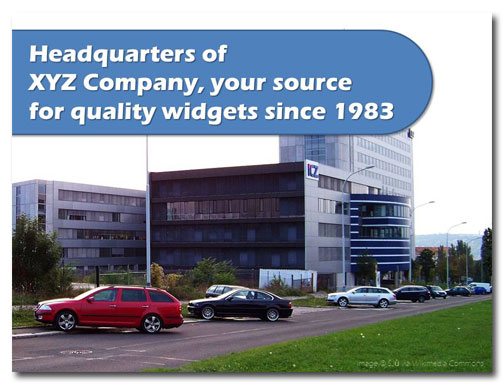How much time do you spend talking about yourself or your company during a sales presentation? Shouldn’t you be addressing customer needs instead?
Time and time again I see presenters taking a “me-centric” approach to sales presentations. They tell the audience all about themselves and their companies, talk about their expertise, then go for the sale based solely on their description of how great the company is. But sales presentations like these tend to drive people away. One-sided presentations leave people thinking that you have no idea what they really need, that all you want is their money regardless of whether or not it’s in their best interest to buy what you’re selling. With these presentations, a salesperson spends too much time trying to impress an audience with their company and not enough time convincing the audience that they know about and can eliminate obstacles to their success.
During a one-sided or “me-centric” PowerPoint presentation you spend most of your time describing yourself or your company. A “me-centric” presentation relates the company’s history; describes awards it’s received; includes photographs of the main headquarters; brags about how many people are already buying the product or services; includes empty catch-all phrases like “Customer service is our number-one priority” and “At [name of company], we strive to be a world-class supplier of [insert product or service here],” etc., etc., etc. After dazzling the audience with the amazing backstory of the company, “me-centric” presentations close with something along the lines of “Now that you know how awesome we are, please buy our product/service/whatever.”
[box style=”note”]Side note: There are almost no reasons to include a picture of your company’s headquarters in your presentation (or other marketing materials). You get a pass if you’re an architecture firm and your building has won awards, or if you are in the business of energy efficiency and your building is LEED certified. Because if you’ve seen one office park, you’ve seen them all.[/box]
Who responds to that kind of baloney? Maybe the company’s Board of Directors but certainly not a someone with a need that hasn’t even been acknowledged during the presentation. Successful salespeople don’t give “me-centric” PowerPoint presentations. Instead, they focus on problems specific to their audience and how to solve them.
Of course it’s important to assure your potential clients that your company has experience, longevity, and a record of successfully helping its clients. I’m not saying you shouldn’t include this in your sales presentations. But this is only part of the message. The bulk of the presentation should focus on your prospects’ problems and offer persuasive arguments for how your solution is the best way to overcome them. You also need to communicate that you understand their business, that you are aware of and respect their needs, and that you’ve helped similar clients in the same situation to solve their problems.
Take a look at your sales presentations from your clients’ and prospects’ point of view, and consider these questions:
- How often do you use the word “we” and “our” instead of “you” and “your”?
- Do you rely on your company’s reputation (as you are reporting it during the presentation) to convince people to hire your company or buy your stuff?
- Are you reassuring your audience that you know exactly the kinds of challenges they face?
- Are you informing them of the consequences of ignoring these challenges?
- Do people understand that you are here to provide solutions based on what you’ve done for other customers?
If you can come up with ways to change a “me-centric” presentation to one that focuses more on the audience, you’ll be one step closer to closing those sales!

